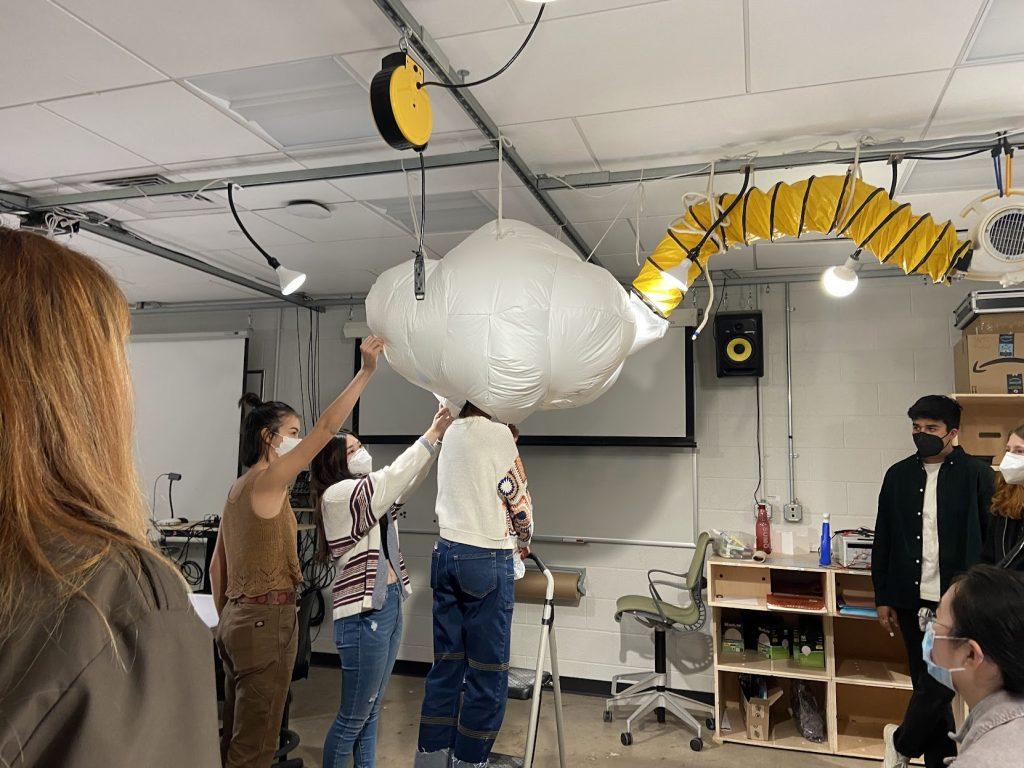
(click the link above to view a video of the inside – I cannot directly embed a video)
We began work on this project by discussing how we could combine our inflatables. We ended up deciding on a combination of Jennifer’s cloud vase, Charlotte’s bacteria thing, and Sandy’s decorative elements. We wanted to create a physical manifestation of “head in the clouds”. We modeled the cloud in Rhino, which proved to have many difficulties – the doubly-curved surfaces wouldn’t squish properly, and when they did squish they broke into many small pieces that were difficult to assemble. Despite these issues, splitting the project up into smaller chunks was helpful because we could each individually work asynchronously on our own pieces. We wanted viewers to be able to put their head in the cloud, so we just cut a slit at the bottom of the cloud. We were worried that too much air would leak through it and the cloud would deflate, but we were happily surprised to find that there was enough airflow to keep the cloud inflated with a head-sized slit. We were also worried that the decorations inside would swing around too much and become tangled, but they mostly just gently moved. The feedback from the class was good to hear and very helpful. We especially liked the commentary on how there are two experiences a viewer can have with the cloud. Being inside the cloud is transformative, bright, and calming; being outside the cloud is funny to see someone put only their head in an object. If we were to expand on this project, we would make it bigger and add more slits so the inside experience could be a social one.
